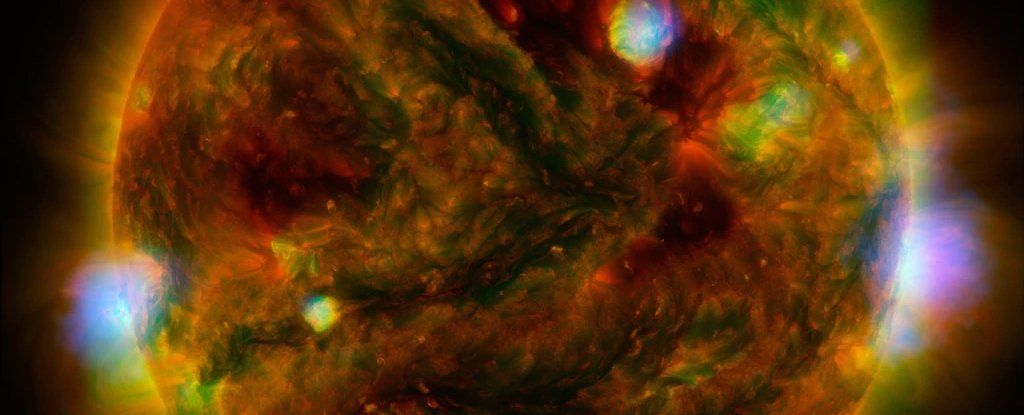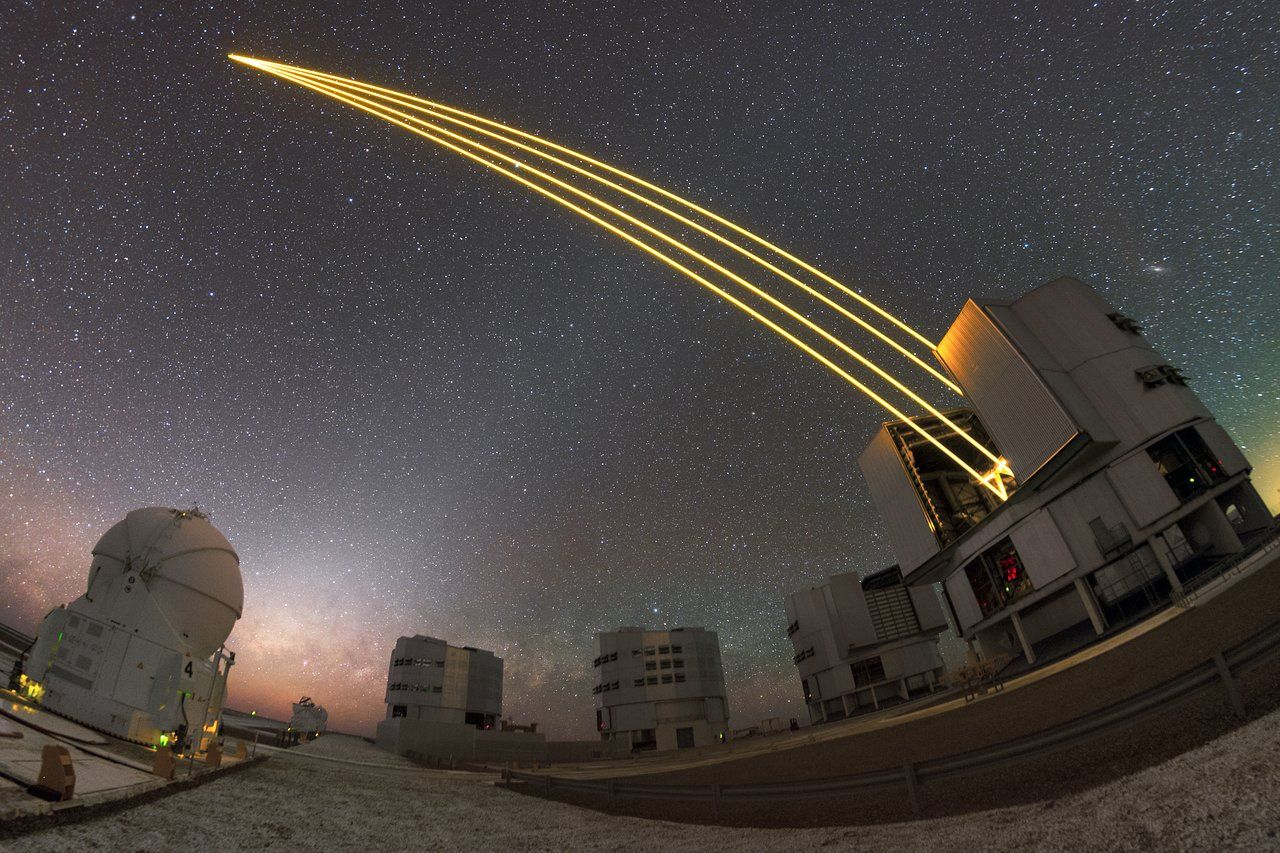Giant lasers may indeed launch fleets of spacecraft to Alpha Centauri, given breakthroughs in the science behind extraordinarily thin, incredibly reflective sails that can catch this laser light, a new study finds.


Giant lasers may indeed launch fleets of spacecraft to Alpha Centauri, given breakthroughs in the science behind extraordinarily thin, incredibly reflective sails that can catch this laser light, a new study finds.

Click on photo to start video.
Inside Emirates’ new first class suites with virtual windows and NASA-inspired seats.

An international team of astronomers led by Leiden University has discovered what may be a “toddler” exoplanet. Orbiting a young binary star system called CS Cha about 538 light years from Earth in the constellation of Chameleon, the object may be less than two million years old and is still growing thanks to the dust disc that it inhabits.
Astronomical discoveries aren’t always eureka moments. Because telescopes are essentially gigantic cameras that spend their careers snapping pictures of the heavens, there’s always a huge library of images to be gone over years or even decades after they were taken.
Such is the case of the Leiden team who were studying CS Cha and its dust disc using the Spectro-Polarimetric High-contrast Exoplanet REsearch instrument (SPHERE) on the European Very Large Telescope in Chile. At only about two or three million years old, the T Tauri-type binary star system is very young and consists of two very small stars less than 30.6 AU (4.6 billion km, 2.8 billion miles) apart. These stars orbit a common center of gravity, and are surrounded by a disc of dust and gas about 55 AU across.

Astronomers have speculated for decades that the giant waves that meander through the Earth’s atmosphere and oceans, driving the weather, might also exist on the Sun. Now those waves have been unambiguously detected inside the Sun, and found to be very similar to those on Earth.
These Rossby waves, or planetary waves, naturally occur in rotating fluids. It is the rotation of the Earth that causes Rossby waves to propagate through the atmosphere and ocean, affecting the climate and weather.
The Sun rotates, too — so, theoretically at least, a similar phenomenon should be taking place in the gases and plasma that make up its layers. Indeed, it should be taking place in all rotating fluid systems.

Space entrepreneur Robert Bigelow’s interest in exotic subjects was as obvious as his company logo. He’d spent years — and millions of dollars — on his own scientific study of UFOs and related topics. For the DIA contract, he created BAASS, a seperate entity housed within his aerospace plant. He hired a team of 46 scientists and investigators, along with dozens of other support personnel.
LAS VEGAS — UFO investigators are hoping to obtain a treasure trove of Pentagon documents that were generated by a once-secret military study of flying saucers and other weird aircraft.
The government confirms there was a UFO program. It supposedly ended in 2012, but the Pentagon has not yet released any reports or files.
The I-Team gives the first look at documents which prove the UFO study was real and was based in southern Nevada.

The eruption of Kilauea Volcano on the island of Hawaii triggered a number of gas- and lava-oozing fissures in the East Riff Zone of the volcano. The fissures and high levels of sulfur dioxide gas prompted evacuations in the area.
Images taken from the Advanced Spaceborne Thermal Emission and Reflection Radiometer (ASTER) onboard NASA’s Terra satellite picked up these new fissures. In the first image, the red areas are vegetation, and the black and gray areas are old lava flows. The yellow areas superimposed over the image show hot spots that were detected by ASTER’s thermal infrared bands. These hot spots are the newly formed fissures and new lava flow as of May 6. In the second photo, also acquired on May 6, the long yellow and green streaks are plumes of sulfur dioxide gas.
On April 30, the floor of Kilauea’s crater began to collapse. Earthquakes followed, including one that measured magnitude 6.9, and lava was pushed into new underground areas that eventually broke through the ground in such areas as the Leilani Estates.

One of the Unit Telescopes of ESO’s Very Large Telescope (VLT) is producing an artificial star — a guide star — in the skies above the Atacama desert, above the flowing Milky Way.
The Four Laser Guide Star Facility (4LGSF) shines four 22-watt laser beams into the sky to create artificial guide stars by making sodium atoms in the upper atmosphere glow so that they look just like real stars. The artificial stars allow the adaptive optics systems to compensate for the blurring caused by the Earth’s atmosphere and so that the telescope can create sharp images.
NASA Langley researchers are experts in modeling and simulations for entry, descent and landing, working on missions since the Viking lander in 1976. In this episode, we explore the challenges of guiding landers like Mars InSight through the Martian atmosphere for a safe landing. Watch InSight launch as early as May 5, 2018! NASA Technology #JourneytoMars
